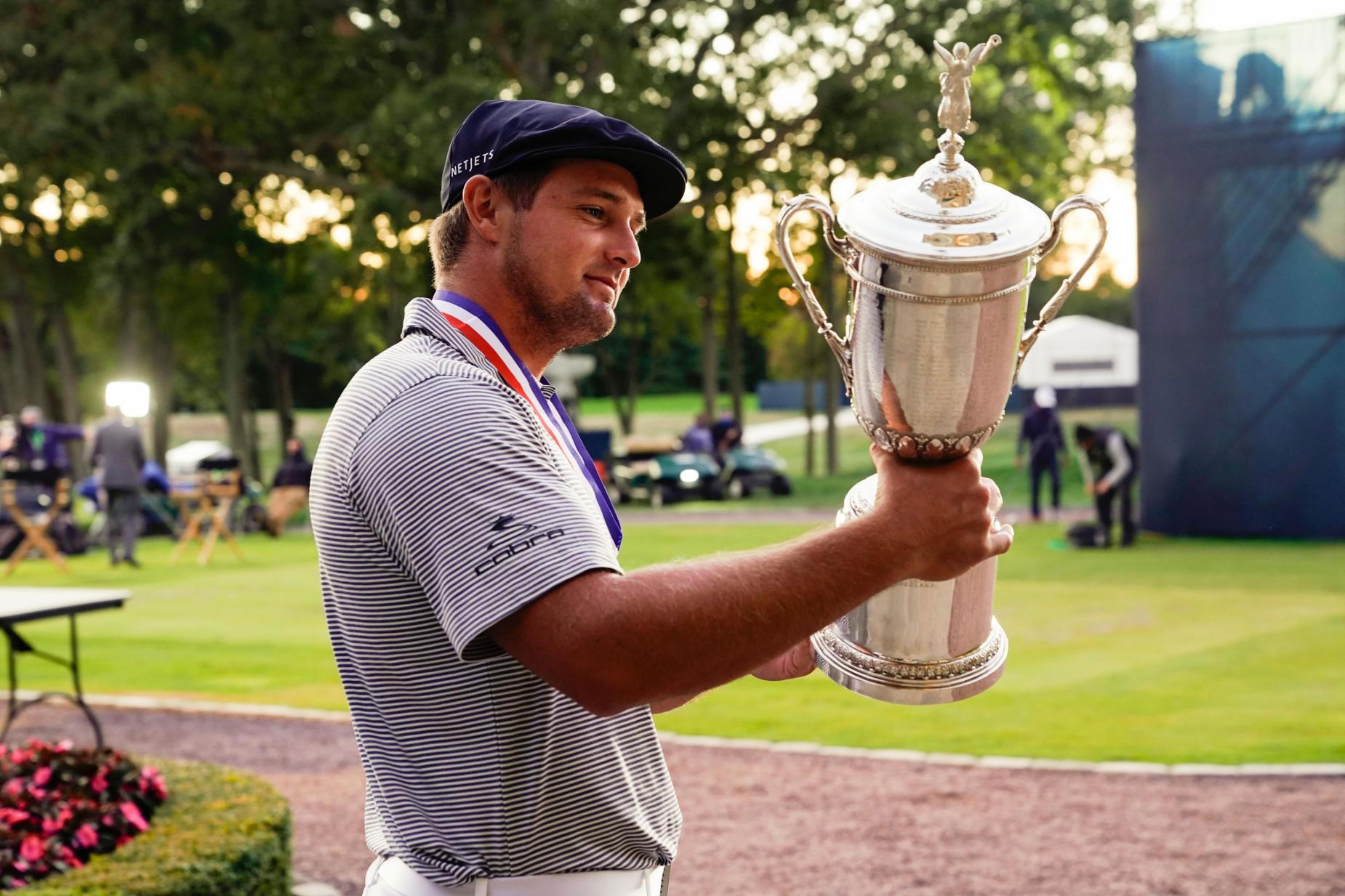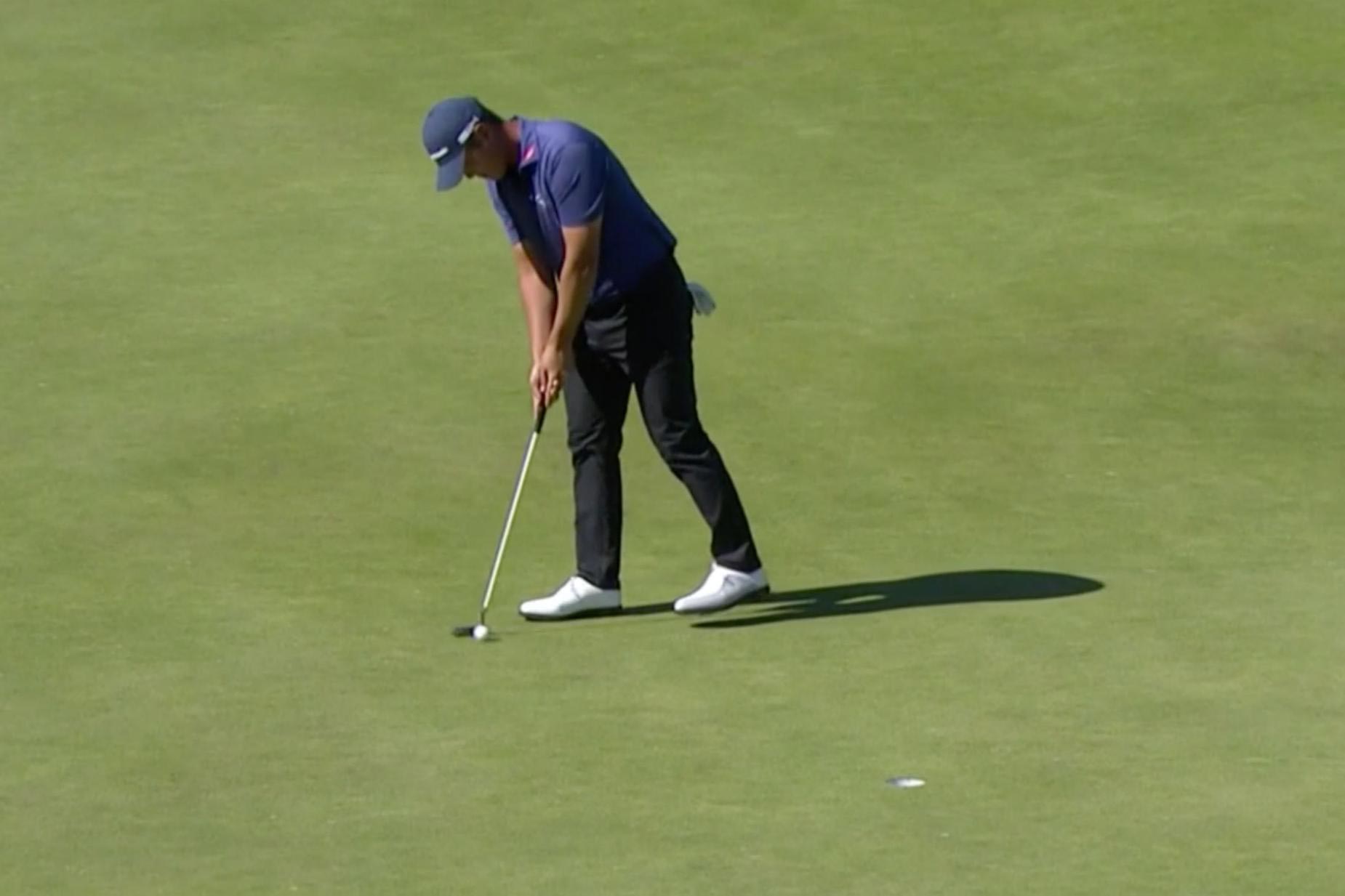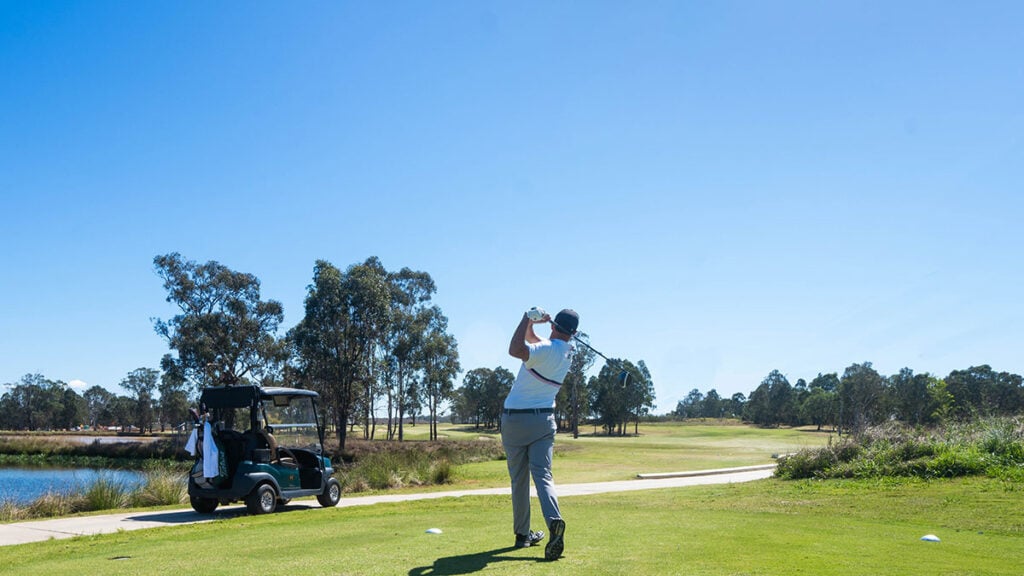We expected carnage. What we got was a tour-de-force. Literally.
Bryson DeChambeau bullied both Winged Foot and his competition in winning the 120nd US Open by six shots. The victory was the culmination of a full-body transformation and a pivotal moment in the distance debate. We’re discussing all that and much more in our 18 Parting Thoughts from Winged Foot.
1. We start, as always, with the winner. Yes, Bryson overpowered Winged Foot. There’s no other way to put it. He hit just 23 of 56 fairways (41.4 percent) for the week, four fewer than any previous US Open champion in 40 years. He had no time for playing for position. He walloped driver wherever feasible. Course architect A.W. Tillinghast would have shuddered not just at DeChambeau’s final tally of six-under, but at how he arrived there and where he hit it. The Winged Foot members weren’t exactly thrilled with what he did to their golf course, either, and surely the USGA thought its famed “US Open rough” would have had a bigger effect on DeChambeau than it did.
But we have to give DeChambeau his due, because he wasn’t the only guy hitting the ball miles this week – he actually finished seventh overall in driving distance – yet he’s the one with the trophy. He was also the only player to shoot under par on Sunday, his three-under 67 three shots better than the next best guy. It was, without hyperbole, one of the best rounds in recent Major championship history. And it was a surprisingly balanced attack all week – yes, he picked up 5.38 shots off the tee, third best in the field. But he actually gained more ground on his approach shots (6.98, third) and around the green (5.42, second), plus an additional 4.59 on the greens for good measure.
And that’s the thing with Bryson. He’s one of the longest guys on tour, and he may even be the longest, but it’s not like he’s playing a different game than Rory McIlroy or runner-up Matthew Wolff or world No.1 Dustin Johnson. To reduce his performance to his driving distance misses the fuller picture. He played well-rounded golf all week, and he won it with his approach play, which typically is the weakest part of his game.

DeChambeau was well aware of this, maybe more so than anyone in the field. Here’s what he said in his post-round media conference: “[Statistician] Mark Broadie was talking to [coach] Chris Como, and they were talking about how they just made the fairways too small this week to have it be an advantage for guys hitting the fairway. So what I mean by that – let’s take an example of you going like a yard wide. Nobody’s hitting the fairway. OK, length’s going to win. You make the fairways too wide, length’s going to win.”
The takeaway: length is always going to win.
RELATED: Full US Open coverage
3: Which brings us to our next point. This was another Major in which the golf course, and the golf ball, became a prominent storyline. Winged Foot was supposed to be immune to bomb-and-gouge. The rough would be too penal, the angles too important, the greens too unforgiving. But that wasn’t the case. Matthew Wolff only hit two fairways in the third round and shot 65. That performance seemingly burned down every preconceived notion we had about how to win a US Open. DeChambeau did the same in the final round.
Everyone had a take. Purists balk at the attack on what they consider the “proper” way to play the game, and would like to see equipment advances halted. Others have no problem with the power evolution in golf. All sports change over time. The three-point line didn’t exist in the NBA until 1979. Now, it’s an integral part of every NBA attack. In baseball, the moneyball revolution de-stigmatised strikeouts and incentivised home-runs. In gridiron, teams pass the ball more than ever. Why, then, should golf be any different?
I don’t have an answer here, or a particularly firm stance. All I know for sure is this: it’s never fun when the golf course or the rule book become a story. And by never fun, I mean mind-numbingly painful.
4: By the way, if you think the debate is heating up now, it’s only liable to get louder and more fervent when we arrive at the Masters for the next Major. It’s one thing when Bryson overpowers Winged Foot. It’ll be quite another if/when he, or someone else, bludgeons Augusta National, the game’s cathedral, into submission.
5: Matthew Wolff showed incredibly well in his first US Open. He never seemed at all overwhelmed by the history at his fingertips, probably because he doesn’t concern himself too much with golf history. On Thursday, he told me he wasn’t really aware of Winged Foot’s past, either the ‘Massacre’ in 1974 or Phil Mickelson’s failure in 2006. He did notice all the pictures and memorabilia when walking through the clubhouse, but he didn’t want to get caught up in it because, as he put it, he “doesn’t want to make this tournament any bigger than it already is”.

It also led to a fun moment just before the start of the final round. Six minutes before he teed off with the lead in a Major, Wolff was traipsing around the first-tee area, on the phone with a friend named Zach. As he saw a number of people staring at him – myself included – he cut the tension with a knife, flashing a cheeky smile and saying, “Hey guys! Hey everyone!” The opposite of nervous. You have to think he wouldn’t have made that phone call, or felt so at ease, if there were 10,000 people in a grandstand yelling his name.
https://twitter.com/usopengolf/status/1307735718219796480
6: Never an excuse, and it evens out over time, but Wolff did get some tough breaks in the final round. His lip-out on the fourth green could have dropped for the same price. On the 10th, his ball hangs up in the rough above the bunker, leaving a virtually impossible up and down. On the 12th, just after DeChambeau hit a drive into the right rough that bounced into the fairway, Wolff’s ball landed in the exact same spot and didn’t get the same bounce. On 17, his drive down the centre of the fairway found a sand-filled divot. This stuff happens to everyone, and it probably wouldn’t have made a difference given DeChambeau’s margin of victory, but Wolff had to feel like someone was against him. As he put it: “wasn’t meant to be.”
7: One more on Wolff. He violated one of the sacred commandments of golf: thou shalt not giveth thee golf ball conflicting instructions. On the 14th hole, he asked his ball to SIT! And then, when it pitched on the very front edge of the green, he yelled GO! Everyone knows the ball only listens to the first instructions it hears. Not sure what Mr Wolff was expecting here.
8: Tiger Woods’ chances of making the weekend died on the dramatic ridge that guards the front of Winged Foot’s 18th green. On Thursday, on his final hole of the day, his second came up just short of it, and he chunked his chip, nuked his fourth well past the flag and two-putted for double-bogey to finish with a 73. On Friday, on his ninth hole of the day, his second came up just short of it, and he chunked his chip, nuked his fourth well past the flag and two-putted for double-bogey en route to a 77.

9: There were 13 amateurs in the field, but only one made the cut: John Pak, from New Jersey, and currently a senior at Florida State University. He opened with a one-under 69 and played some really nice golf all week. He’s in great position to be among the first beneficiaries of the new PGA Tour U program, in which the top five college seniors receive Korn Ferry Tour cards for the next year. Here’s hoping he continues to wear diamond studs in both ears after he turns pro.

And then there’s Harris English. On the first hole on Sunday, he snap-hooked his tee shot into trees between the first and ninth fairways. The ball was never found. Thirty-odd volunteers aided in the search, but no dice. You have to think that ball stayed in a tree. Whatever happened, the two-stroke penalty cost him about $US250,000, the difference between the third and fourth-place cheques (he finished alone in fourth). The simple solution: don’t hit it there. But plenty of guys hit it there, and they all found their balls.
11: The 18th tee was the site of maybe the coolest club-snap in history. It was there on Friday that Henrik Stenson pulled a long iron into the left rough. It was his last hole of the day, and he was already nine-over and knew he was missing the cut. He proceeded to stick the toe of the club in the ground, snap the shaft with his foot, then hand the remains to his caddie saying with a wry smile, “Oops.” We’d never glorify such a behaviour – think of the children! – but man, that was swaggy.
12: Despite living in New York for three-plus years, this week was my first time on the grounds at Winged Foot. On Monday afternoon, after finishing up some housekeeping stuff in the media centre, I headed out to see the course for an initial look. I watched highlights of the 2006 US Open on the weekend and had done my share of preparation, so I knew the greens were going to be something to behold.
And then I saw the 18th green and I stopped dead in my tracks. Couldn’t believe it was real. It is, without exaggeration, the most severe, the most wonderfully bizarre putting surface I have ever seen in my life. All the ultra-HD drone flyovers and topography graphics simply do not do the Winged Foot greens justice. They are way, way more dramatic than you could ever expect. One of those things you just have to see in person to believe.
13: We try to take it easy on golf announcers, because it’s truly an incredibly difficult job. You’re on air for five hours, and there’s a crazy amount of dead time. OK, there’s our disclaimer. Now’s the gripe: Paul Azinger called Matthew Wolff’s approach shot on Sunday to the first hole – the very first hole – “clutch.” About a minute later, Xander Schauffele hit a nifty little flop to tap-in range on the second hole. Azinger: “What a clutch chip!” Here’s an official motion to ban that word until the back nine on Sunday. Because not every shot from every player on every hole on Sunday is “clutch”.
14: Will Zalatoris was one of the more intriguing players in the field this week. The 24-year-old has been the best player on the Korn Ferry Tour in 2020, and Data Golf’s proprietary algorithm had him as the 41st-best player in the world coming into the week. That seemed a bit extreme… until he finished tied for sixth. He led the field in strokes gained/approach (7.97) and went as close as you can come to having two holes-in-one in the same round on Thursday. He took home $US424,040 for his efforts, the biggest pay cheque of his career by a mile. It’s a shame that because of the pandemic, he won’t get a PGA Tour card for another full year. He’s so clearly ready.

16: Actually, come to think of it, maybe that label belongs it’s Schauffele. This was his fourth finish of T-6 or better in four US Open starts, and he now has seven top 10s in 12 Major appearances. His game is made for the big stage and the toughest courses, and while he didn’t have it this week, we still like him to win multiple Majors before 2030.
17: Danny Lee didn’t quite go full Phil Mickelson, but it was close. On Saturday, after birdieing the brutal par-4 17th to get to a very respectable three-over for the round, he hit his second shot just short and right of the 18th green. His pitch was very good, leaving about a five footer for par. And then mayhem broke loose.
Lee six-putted. He tried on the first one and the second one, and then he stopped trying completely and went full whack-a-mole. He was obviously frustrated and ostensibly fed up with the trying greens at Winged Foot. But it wasn’t like he was playing a terrible round or anything like that. Video of the episode emerged later, and it wasn’t pretty. Neither was him slamming his putter against his bag twice afterwards.

Lee then withdrew from the championship, citing a wrist injury. Maybe his that was a problem, and that contributed to the frustration. Or maybe the Powers That Be politely suggested he pull out of the tournament after that childish tantrum. Who knows. But until Lee does something great in the game of golf, that’s what he’s going to be known for. And it’s not a good look.
18: Only 52 days until the Masters. See you all in Augusta.




